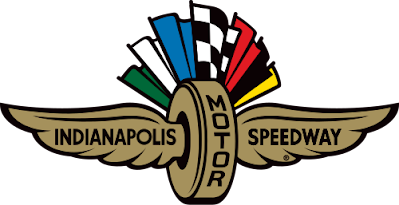On this day in 1911, Ray Harroun won the first Indianapolis 500 race in his Marmon Wasp. The 500 indicates 500 miles. It took Harroun almost seven hours to make the 200 laps around the brick course at an average speed of 75 mph. The Spaniard Alex Palou covered the same distance this past Sunday in a bit under three hours at an average speed of 169 mph.
In 1970 I watched Al Unser win in 3 hrs.12 mins, average speed 156 mph. I shouldn't say I watched the race because I had no idea what I was looking at. Thirty-three cars had started at a high rate of speed like a bunch of noisy wasps. At first I could see a leader, but soon drivers were making pit stops and it became a jumble. Real fans had their favorites and knew who was where. But I was not a fan. I think it helps to be born in the Midwest to become a true fan. The Midwest has lots of long straitaways for driving fast, and fewer cops around.
So it was odd that I as someone with no interest in racing was at this primo car racing venue. In 1970 I was in the Navy stationed at Fort Meade in Maryland. One of my shipmates, Jack Crider, was from Indianapolis. He invited me home for the Memorial Day weekend. We'd stay at his parents house and he had an extra ticket to the race for me. Sure, why not. Jack and I owned a Chevy Nova together and we left work a little early and arrived late at Jack's parent's home. Next day we drove over to Jack's alma mater, Wabash College. School was out out and Jack showed mt his frat house. Hmm...the top floor sleeping quarters were in a big open room with bunk beds like our barracks back at Fort Meade. We stopped at one of Jack's old haunts for a beer then drove back to the city.
When Jack was a kid he got into the race free by selling newspapers on race day. We got into our seats in time for the start. I noticed people around me had seat cushions and styrofoam coolers filled with snacks and beer. I was amazed people could bring alcohol into a public place like this. I just checked and it's still allowed, which may explain why racing is such a crowd pleaser. After all, alcohol is part of racing's heritage. Cars that go fast were inspired by bootleggers trying to outrun the Feds during Prohibition.
As I say I was totally lost as to the meaning of it all. I don't remember Jack hooting and hollering about the race. We wandered around the speedway as the cars whined around the track. Finally it was over. Three hours and twelve minutes. About the length of a baseball game. As we walked under the stands I saw people leaving their styrofoam coolers behind. I took one with me and used it for years, my unofficial souvenir of the race.
There were other positives to the weekend. I got several good meals provided by Jack's mom. The highlight was a chat with his grandfather who had worked with his father in a coal mine. He said the lights on their helmets were not much more than a candle. Then some new fangled lights that were much brighter came along. The old guys hated them and stuck with their candles. They complained about the younger guys shining their lights in their eyes. That was enlightening. The old will always resist what the young like even when it's better. That insight alone was worth the trip. So Jack, if you're reading this now, thanks for a great weekend.
 |
| Speedway logo 1909-2008. I dislike the new logo because I'm old. |
There's ever more stuff about you I've never heard over the course of 42-years; then there's stuff about you that resonates repeatedly throughout -- for example you snagging a Styrofoam cooler and " ... used it for years." What? Any flimsy white single-wall Styrofoam cooler I've ever bought, (without a plastic or metal case), has never lasted a whole summer. I'll bet you still have yours in the loft of your garage.
ReplyDeleteBeing born in Iowa didn't endow me with a lust for stock car racing around an oval. I attended the Iowa 300 held at the Iowa State Fairgrounds in 1969 and the only thing I derived from it was a waste of a perfectly good afternoon watching a bunch of cars without mufflers going around in a circle.